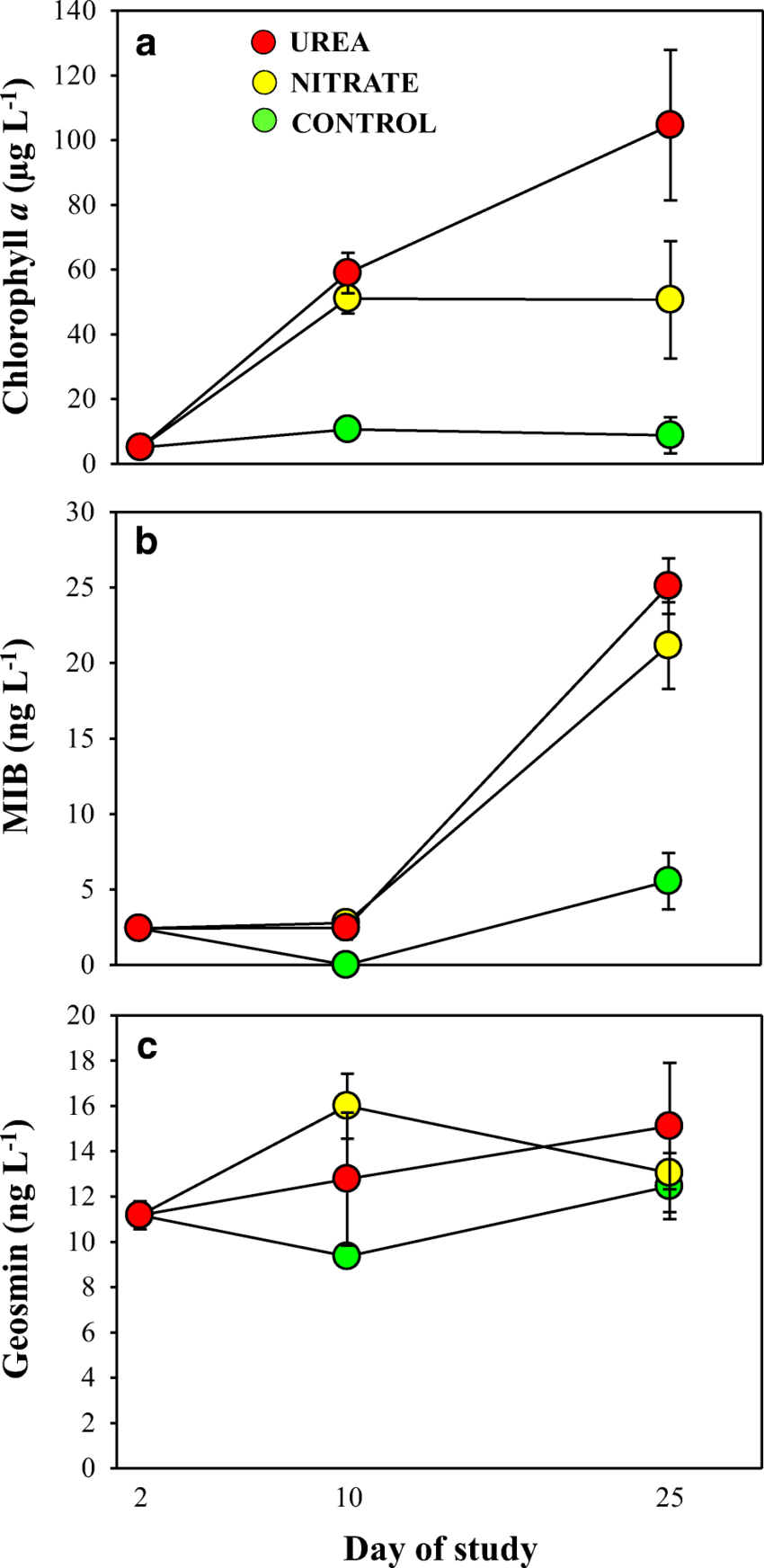Keyword: Actinomycetes

Chislock, M. F., B. K. Olsen, J.J. Choi, A. Abebe, T. L. Bleier, and A. E. Wilson. 2021. Contrasting patterns of 2-methylisoborneol (MIB) vs. geosmin across depth in a drinking water reservoir are mediated by cyanobacteria and actinobacteria. Environmental Science and Pollution Research 28:32005-32014.
Abstract
Taste and odor episodes caused by off-flavor secondary metabolites, such as 2-methylisoborneol (MIB) and geosmin, pose one of the greatest challenges for drinking water utilities around the world. The prevalence of these compounds is predicted to increase in the future as a function of nutrient enrichment and elevated temperatures of surface drinking water sources. We conducted a manipulative field experiment in a drinking water reservoir to elucidate patterns for two taste and odor compounds, MIB and geosmin, as well as two taxa known to produce these compounds, phytoplankton (more specifically, cyanobacteria) and actinobacteria, across different depths in response to nutrient enrichment with two common dissolved nitrogen forms, organic urea or inorganic nitrate. In general, we found that MIB levels increased by greater than 250% with nutrient enrichment mediated by increased phytoplankton biomass. However, the effect of the fertilization treatments on MIB decreased with depth with a 35% reduction at 7 m versus 1.5 m. In contrast, geosmin levels reached a maximum at the lowest measured depth (7 m), were unaffected by the fertilization treatments, and followed a similar pattern to the abundance of actinobacteria. Thus, our data suggest that the positive response of phytoplankton (e.g., cyanobacteria, such as Oscillatoria species) to the fertilization treatments is likely responsible for increased MIB, while geosmin concentrations may be a function of actinobacteria-mediated decomposition in the hypolimnion in our study system.

Powers, M. J., A. E. Wilson, K. B. Heine, and G. E. Hill. 2020. The relative importance of various mating criteria in copepods. Journal of Plankton Research 42(1):19-30.
Abstract
To produce viable offspring, organisms may assess mates via criteria that include traits, such as sex, species, age, reproductive status, population identity and individual quality. Copepods are small, ubiquitous crustaceans that live in freshwater and marine systems around the world whose patterns of mate choice have been long studied in numerous species. Herein, we synthesized decades of experiments describing sexual selection in copepods to assess the importance of mating criteria. We used formal, meta-analytical techniques and mixed modeling to quantify the likelihood of non-random mating associated with mating criteria. In our synthesis of the scientific literature, we found that copepods use several criteria when assessing mates and that these criteria are associated with different likelihood estimates. We report the strongest likelihood of non-random mating when copepods assess the reproductive status of females or when copepods select between conspecific vs. heterospecific mates. We found weak likelihood of non-random mating in studies that provide mates from different populations or that manipulate operational sex ratio. Studies that directly test assessment of individual quality are sparse in copepods when compared to equivalent studies in vertebrates, and we encourage future researchers to explore whether copepods use individual characteristics as key mating criteria.